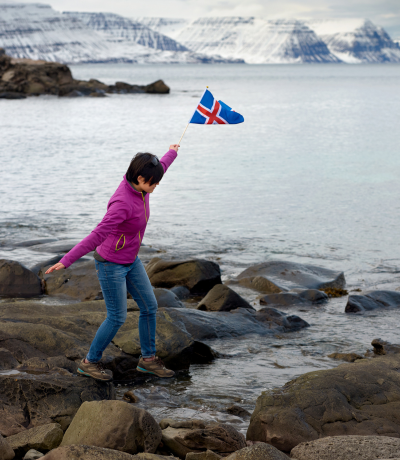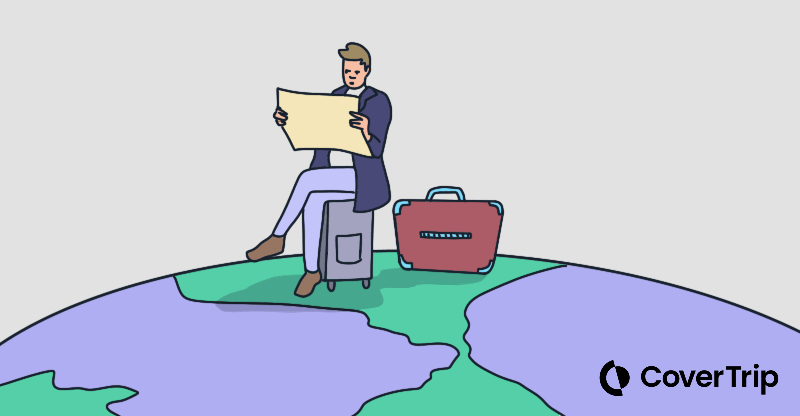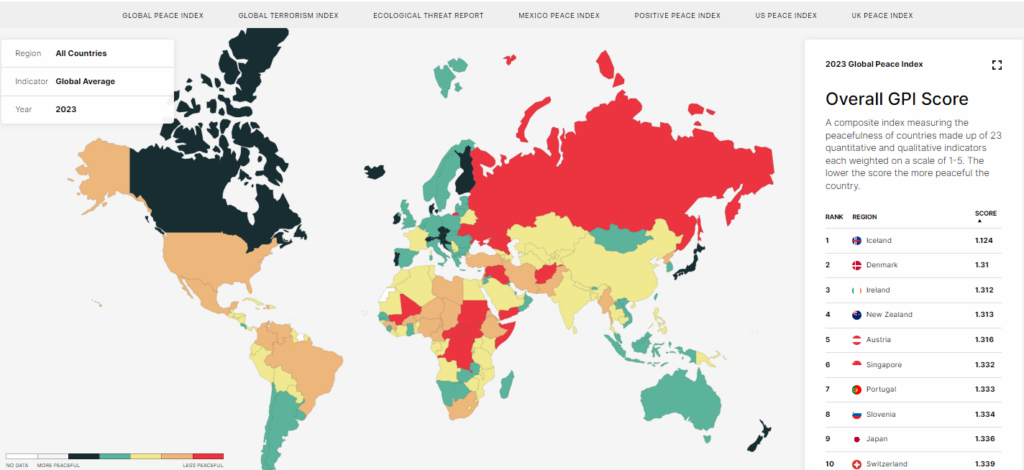Fearless and informed: smart tips for solo travelers
3 August 2023
People travel for all sorts of very individualized reasons: a chance to break out of the ordinary, the opportunity for self-discovery, or the simple joy of exploring. Traveling can be transformative, restorative, and rejuvenating … and sometimes a traveler has to go alone.
Results from the 2022 Solo Traveler Reader Survey reveal some of the reasons why people choose to travel alone:
- They want to see the world and don’t want to wait for others
- They prefer to do what they want when they want
- They like the feeling of freedom and independence
According to a travel trends survey by Kayak, searches for single trips are up by 36% in 2023, and Skyscanner data indicates that 54% of travelers are considering solo trips this year. Internet searches for solo travel hit an all-time high in July, so it’s clear that solo travel is growing across all age groups, nationalities, and genders.
Here’s an important point to note: not all solo travelers are women, although much of the advice is geared toward women travelers. Another important point is the fact that much of the advice related to trips you take alone isn’t all that different from trips you take with others.
With no one else to depend on, solo travelers do have to take extra care while planning a trip, when navigating to new locations, and when interacting with strangers.
Here’s what solo travelers need to know.

Go easy on your first solo trip
If you’re not used to traveling alone, go easy on your first trip. You don’t have to circumnavigate the globe or don a heavy backpack and hike a pilgrimage trail to get a first taste of solo travel.
Start with a destination in your own country, or at least where you speak the language fluently. It’s just the first trip and starting off easy will give you experience and the confidence to build up to other trips.
Choose a solo-friendly destination
Solo travel is not a recent trend, but not all destinations are right for solo travel. How do you find out if you’ll be safe in a particular destination?
Start with a search of the Global Peace Index to see how safe the location is likely to be:

Notice the ranked list on the right? Iceland is right at the top as one of the safest countries in the world.
Some places are just built for solo travel:
- Japan is a long-time favorite for solo travelers because Japanese society is built for people doing things alone. Restaurants have individual tables for one and service counters for solo diners. Single travelers don’t pay extra for traveling alone, and hotels have accommodations tailored to singles.
- Slovenia is the 7th safest country in the world, and 85% of women report feeling safe walking alone at night there.
- The United Arab Emirates are top-of-class in hospitality and safety. Both Abu Dhabi and Dubai consistently rank in the top 20 safest countries in the world, and if you prefer, there are all-female pink taxis you can take.
Other top solo-traveler favorites are places like Norway, Sweden, and Finland. Their world-class safety, gender-equal societies, spectacular landscapes, and exciting city breaks hit all the marks.
Google for scam trends
Familiarize yourself with the popular tourist scams in the location where you’ll be traveling, and be specific. Include the city in your search, and the year. This will show you results that are current.
Here’s an example: ‘tourist scams in Tulum, Mexico 2023’.
See what typing ‘tourist scams in rome italy 2023’ reveals:

Those are very specific results, and now you know what to watch out for!
Prepare the people back home
The following tips are useful for people traveling with partners or families too, but especially helpful and necessary for solo travelers:
- Come up with a term only you and a few chosen people back home know. If you are genuinely in trouble or need money, that password will help them know it’s not a scammer impersonating you.
- Leave an electronic copy of important documents like your passport, travel insurance, hotel arrangements, flight information, etc. If your phone is stolen, they can provide support.
- Consider sharing your location using your cellphone app if you feel comfortable with that level of sharing.
Pack travel safety gear
As you might have guessed, these are recommendations suitable for people traveling with others as well, and they’re most important when traveling solo:
- Pick-pocket-proof clothing – pants and jackets with zippers and hidden pockets
- An anti-theft day pack, cross-body purse, or pocket belt
- A doorstop/alarm for your hotel room (See Hotel safety tips for all travelers)
- A whistle or loud alarm that can scare away unwanted attention
- A VPN on all your devices (See What every traveler needs to know about VPNs)
- Portable power bank to keep your phone charged up
Know what to do if you get sick
Plenty of things can go wrong on any trip, but if you’re traveling solo and get sick you have to rely on yourself.
- Know the health risks in the location where you plan to travel.
- Research the local medical options, so you know where to go if you get injured or sick. In some countries, you can go to a pharmacy for an appointment with a specialist, for example.
- Pack your own travel health kit.
- Buy travel health insurance that will cover you where you plan to travel.
Don’t skip that step, especially if you are traveling outside the country.
Pro tip: The local US embassy or consulate office can help travelers locate medical providers.
Bonus: Have the emergency number for the location you are traveling available, so you know how to call the equivalent of 911 if you need emergency services.
Arrive in daylight
This is a tip recommended for all travelers, but especially critical for solo travelers.
Arriving in the dark is not as safe as arriving in daylight hours. The act of trying to locate your luggage, car, parking, and lodging while jet-lagged is not ideal for safety any time of the day, but doing all those things at night makes it harder and more confusing.
Bonus: If your lodging looks less than safe, you’ll know right away and can make adjustments if you don’t like it.
Always carry your hotel’s business card
When traveling in an unfamiliar place, it’s easy to get turned around or go so far that you’re too tired to walk back.
To avoid forgetting the hotel address, or in case you lose your phone, have your hotel’s business card in your pocket.
Carrying the business card makes it easy to hand to a driver without any language or directional issues. If you lose the card or give it to a driver, ask for another when you return from your day of traveling.
Prepare for safety before heading out
Despite all the research you’ve done, you can’t assume that your hotel room is safe.
- Don’t leave valuables lying about the room – money, passports, and electronics often go missing.
- Separate your money or credit cards, and take just what you’ll need for the day.
- Lock valuables into the in-room safe using a combination only you know.
Pro tip: Snap a photo of the valuables stored in the safe and the password you type. If something goes missing, you’ll have evidence to confront the staff or claim travel insurance. If you forget your password, you’ll have a reminder.
Tips to meet new people
If meeting new people is a goal, you’ll want to follow these tips:
- Choose accommodations with communal spaces or co-working spaces where you can meet other travelers in a casual, no-pressure environment.
- Sign up for group trips. When you’re on a 10-hour day trip with a bunch of strangers, it’s nearly impossible not to make a friend or two along the way.
- Find local groups you can join for activities you like to do, like a group hike, wine tasting, or a pickleball meet.
Do it safely: Don’t overshare your personal information or itinerary plans that someone could use to follow you or stake out your home while you’re gone. Where you’re staying is personal information.
Take advantage of the power of one
Even the most popular restaurants can squeeze solo diners in, and singles can snag discounted seats at shows by looking for just one ticket close to showtime. A single traveler can also access the faster-moving singles lines at amusement parks like Universal Studios Hollywood and Disney World, filling spots left empty by groups.
Pro tip: Use your single-ness to your advantage, including asking the hotel for single occupancy rates (which are sometimes cheaper).
Do it safely: If every other table in the restaurant is filled with a couple, and you don’t feel comfortable sharing you are alone, ask for a table for two. You can tell the staff your partner got delayed or lost later. (Just leave a slightly bigger tip.)
Navigate safely
One advantage of traveling with a partner is that one can keep an eye on the surroundings while the other looks at the map on their phone. When you travel solo, you have to navigate on your own.
Here’s how to do that safely:
- Study the map for your next destination while in your hotel or seated in a cafe. This way, you have a good idea of the path you’ll take and won’t have to look at your phone as often.
- If you need to look something up, step into a store or cafe rather than signaling you’re lost to everyone around you.
- Rather than looking at your phone while walking, use one earbud to listen to directions. Keep the other ear available for situational awareness.
Safety tip: If you’re being followed, don’t stop. Walk assertively to the nearest group of people and plant yourself into them.
And finally, stay alert, sleep well, and keep sober.
Related topics
Damian Tysdal is the founder of CoverTrip, and is a licensed agent for travel insurance (MA 1883287). He believes travel insurance should be easier to understand, and started the first travel insurance blog in 2006.
